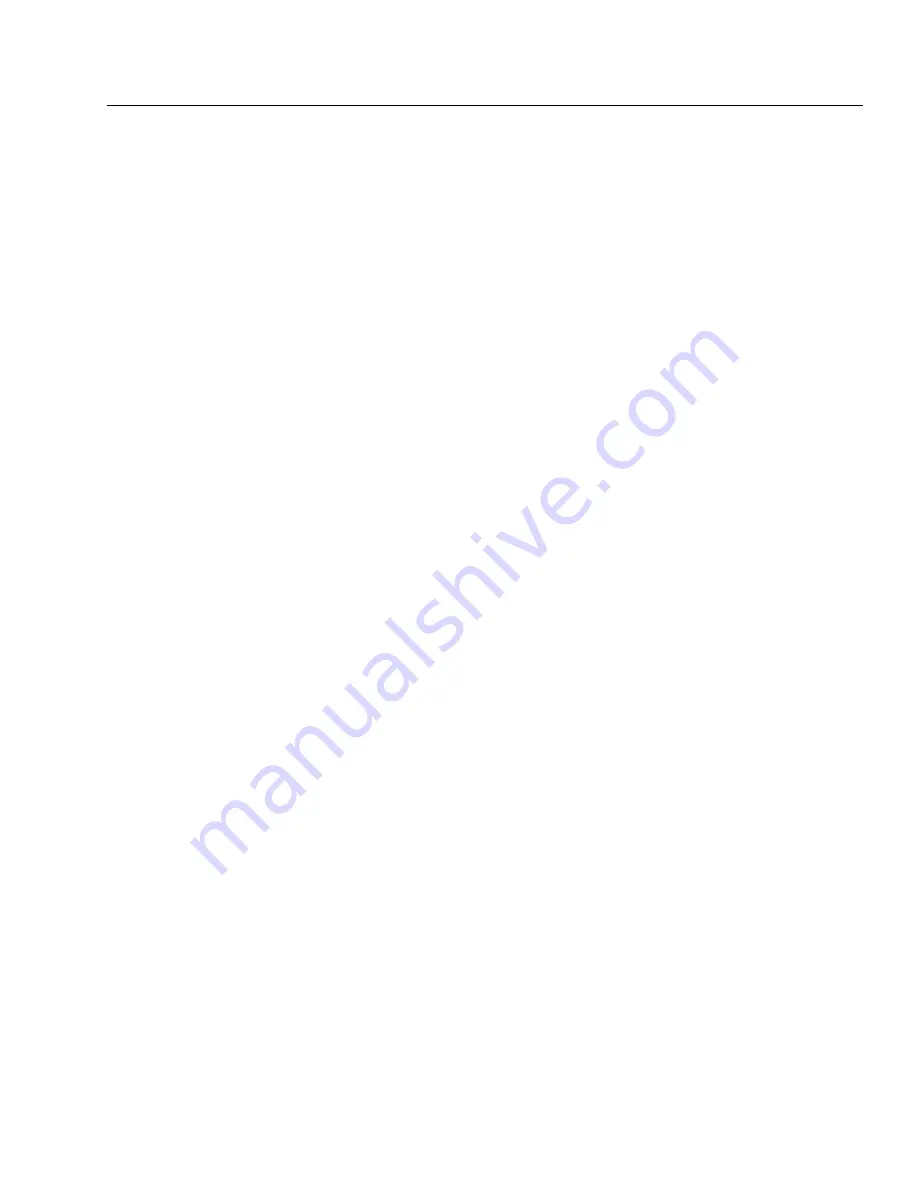
1. Clean individual metal parts (except those parts containing switches and electrical wiring) and
the combustion tube assembly by immersing them in dry-cleaning solvent, such as Stoddard solvent
(Federal Specification P-D-680). A bristle brush should be used to assist the cleaning process if foreign
accumulations are stubborn to remove.
2. Use compressed air or lintless cloth to dry the parts, unless sufficient time is available for them to air dry.
3. Wipe electrical components with a clean, dry cloth. If foreign material is difficult to remove, moisten the
cloth in carbon tetrachloride or electrical contact cleaner and clean all exterior surfaces thoroughly.
CLEANING AND INSPECTING THE COMBUSTION TUBE ASSEMBLY. (Refer to Figure 21-18)
1. Slight scaling and discoloration of the combustion tube assembly is a normal condition for units that have
been in service up to 500 airplane hours. The slight scaling condition will appear to be mottled and a
small accumulation of blue-gray powder may be present on the surface in certain areas. This condition
does not require replacement of the combustion tube assembly unless severe overheating has produced
soft spots in the metal.
— Note —
This assembly should be inspected prior to cleaning in order to prevent the removal of
visible evidences of damage.
2. Look inside the exhaust outlet to determine if the combustion tube appears to be heavily scaled or
mottled. Deformation is more difficult to detect visually but can usually be observed by looking straight
through the combustion tube assembly and sighting along the outer surface of the inner combustion tube.
An assembly that has been obviously deformed should be replaced. Slight deformation will not affect
heater operation unless it is extensive and localized enough to reduce the flow of ventilating air through
the heater more than 10 percent. Inspect the sensing tube for clogging. If it is clogged, it must be
cleaned. Disconnect at switch and clean tube by blowing air through it. If combustion by product
residue has collected in the exhaust end of the tube, it may be necessary to clean the tube with a wire.
3. The combustion tube assembly may be cleaned by either of two methods:
A.
One method is to soak the combustion tube assembly overnight in a solution of Kelite No. L23S
cleaning solution (I to 12 parts by volume). The solution should be maintained at a temperature of
between 190~ F and 210~ F. After soaking overnight, rinse the combustion tube assembly thoroughly in
water to remove all traces of the Oakite solution. In order to reach all areas of the combustion tube
assembly, it is advisable to let it stand in the rinsing water for as long as 1/2 hour while occasionally
agitating it to circulate the water. All openings should be left open during this operation. Be sure to dry
the combustion tube assembly thoroughly after cleaning by blowing with shop air.
B.
A second method of cleaning is what is commonly known as hand "tumbling." Insert shot or other
metallic particles through the exhaust outlet opening; then close all openings and shake the combustion
tube assembly vigorously while rotating it and changing from end-to-end frequently. Be sure to pour out
all of the particles and loosened material; then with all openings uncovered, direct a stream of
compressed air into the combustion tube assembly from first one opening, then the other. Make sure all
loose material is removed.
PA - 4 4 - 1 8 0 / 1 8 0 T
AIRPLANE MAINTENANCE MANUAL
2 1 - 4 4 - 0 4
Page 21-35
Revised: May 15, 1989
1G2
PIPER AIRCRAFT
Summary of Contents for SEMINOLE PA-44-180
Page 38: ...CHAPTER DIMENSIONS AND AREAS 1B14...
Page 49: ...CHAPTER LIFTING AND SHORING 1C1...
Page 53: ...CHAPTER LEVELING AND WEIGHING 1C5...
Page 58: ...CHAPTER TOWING AND TAXIING 1C10...
Page 62: ...CHAPTER PARKING AND MOORING 1C14...
Page 65: ...CHAPTER REQUIRED PLACARDS 1C17...
Page 70: ...CHAPTER SERVICING 1C22...
Page 98: ...CHAPTER STANDARD PRACTICES AIRFRAME 1E2...
Page 108: ...CHAPTER ENVIRONMENTAL SYSTEM 1E12...
Page 189: ...CHAPTER AUTOFLIGHT 1H21...
Page 192: ...CHAPTER COMMUNICATIONS 1H24...
Page 202: ...CHAPTER ELECTRICAL POWER 1I10...
Page 228: ...CHAPTER EQUIPMENT FURNISHINGS 1J12...
Page 233: ...CHAPTER FIRE PROTECTION 1J17...
Page 238: ...CHAPTER FLIGHT CONTROLS 1J24...
Page 304: ...2A18 CHAPTER FUEL...
Page 325: ...2B17 CHAPTER HYDRAULIC POWER...
Page 357: ...2D1 CHAPTER ICE AND RAIN PROTECTION...
Page 414: ...CHAPTER LANDING GEAR 2F13...
Page 479: ...2I6 CHAPTER LIGHTS...
Page 488: ...2I16 CHAPTER NAVIGATION AND PITOT STATIC...
Page 503: ...2J7 CHAPTER OXYGEN...
Page 524: ...2K6 CHAPTER VACUUM...
Page 535: ...2K19 CHAPTER ELECTRICAL ELECTRONIC PANELS AND MULTIPURPOSE PARTS...
Page 546: ...INTENTIONALLY LEFT BLANK PA 44 180 180T AIRPLANE MAINTENANCE MANUAL 2L6 PIPER AIRCRAFT...
Page 547: ...2L7 CHAPTER STRUCTURES...
Page 582: ...CHAPTER DOORS 3A18...
Page 593: ...CHAPTER STABILIZERS 3B8...
Page 604: ...CHAPTER WINDOWS 3B22...
Page 611: ...CHAPTER WINGS 3C10...
Page 624: ...CHAPTER PROPELLER 3D1...
Page 643: ...CHAPTER POWER PLANT 3D21...
Page 667: ...CHAPTER ENGINE FUEL SYSTEM 3F1...
Page 681: ...CHAPTER IGNITION 3F16...
Page 712: ...CHAPTER ENGINE INDICATING 3H1...
Page 730: ...CHAPTER EXHAUST 3H19...
Page 734: ...CHAPTER OIL 3I1...
Page 743: ...CHAPTER STARTING 3I11...
Page 755: ...CHAPTER TURBINES 3J1...
















































